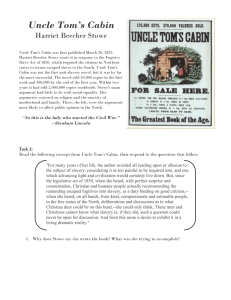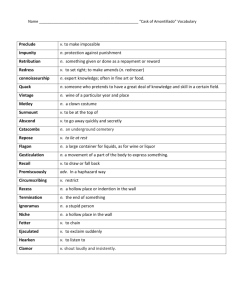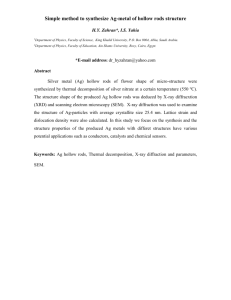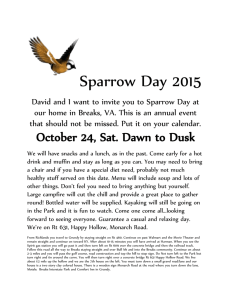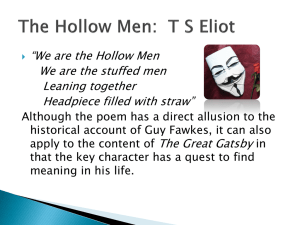by Patricia A. Martinelli, MA
advertisement
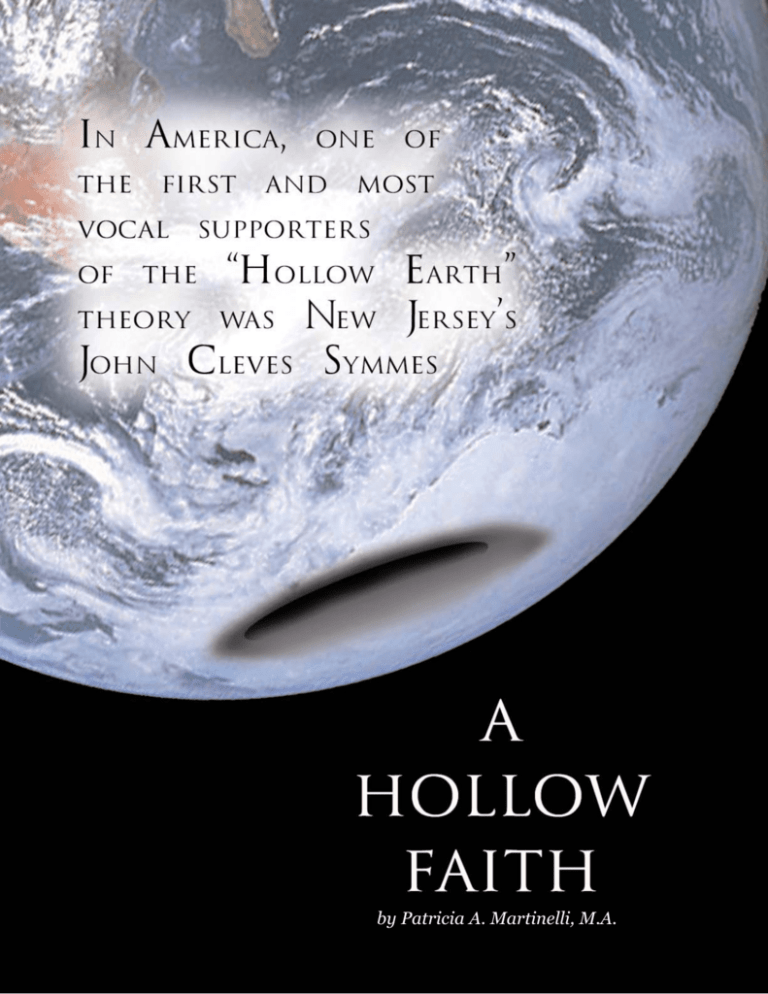
by Patricia A. Martinelli, M.A. any people are familiar with the premise of Journey to the Center of the Earth, a spectacular adventure story by 19th century author Jules Verne that took its characters deep into a subterranean world where other civilizations were said to exist. However, what most people don’t know is that the idea of a “hollow earth” was once not considered mere fiction. A number of prestigious scientists and philosophers of the time even felt there was sufficient evidence to believe that it was fact. In America, one of the first and most vocal supporters of the hollow earth theory was John Cleves Symmes, who was born on November 5, 1780, in Sussex County, New Jersey, according to a transcript of his biography, made available through the Hamilton Lane Library in Hamilton, Ohio. The nephew and namesake of a well-respected New Jersey Superior Court Judge, Symmes entered the American Army as an ensign in 1802. He was gradually promoted over the years and served as a captain during the War of 1812. In poor health at the end of the war, he retired from the military and moved to St. Louis, Missouri, where he eventually married Mary Anne Lockwood, the widow of a fellow officer. Although he first tried to make a living as a trader, Symmes was not a successful businessman. In 1819, he moved his family from St. Louis to Newport, Kentucky. Five years later, Symmes relocated to a farm near Hamilton, Ohio, which was given to him by his uncle, also named John Cleves Symmes, an early investor in land in the Midwest. However, Symmes’ interests never revolved around practical matters such as earning a living. Following retirement, he studied different subjects, but was especially intrigued by the idea that there was another habitable world existing beneath the surface of the planet. Ancient writings about the Greek Hades, Jewish Sheol, and Christian Hell, which some early civilizations literally viewed as an “underworld,” probably served as the core of the theory, proposed in the late 17th century by public figures such as Edmund Halley (of “Halley’s Comet” fame). The wellknown English astronomer apparently believed that these interior worlds were responsible for fluctuations in the earth’s magnetic field. According to www.unmuseum.com: “Halley also suggested that the interior of the Earth was populated with life and lit by a luminous atmosphere. He thought the aurora borealis, or northern lights, was caused by the escape of this gas through a thin crust at the poles.” Halley posited, in fact, that there were actually three interior earths nestled inside one another within the outer crust. Two mathematicians, Leonhard Euler of Switzerland and Sir John Leslie of Scotland, reportedly supported Halley’s theory. However, Euler apparently believed that there was just one interior sphere that was home to an advanced civilization, living beneath a sun that was 600 miles in M John Cleves Symmes Remembered today for recognizing the periodicity of comets, Sir Edmund Halley was also an originator of the “hollow earth” theory. A Hollow Faith • Patricia A. Martinelli, M.A. • www.GardenStateLegacy.com March 2012 diameter. Leslie’s version of the concept was said to include two suns that he dubbed “Proserpine” and “Pluto.” Although such an idea might sound strange today, it was advanced at a time when whole continents were still being explored. As a result, it was not so farfetched to believe that since human civilization had barely scratched the surface of the earth, other worlds might possibly lay beneath it. It was while living in St. Louis that Symmes first began to promote his version of the hollow earth theory. On April 10, 1818, he created a circular for public distribution that stated: I declare the earth is hollow and habitable within; containing a number of solid concentrick spheres, one within the other, and that it is open at the poles twelve or sixteen degrees. I pledge my life in support of this truth, and am ready to explore the hollow, if the world will support and aid me in the undertaking. Since the passages to the subterranean world were thousands of miles wide, he was sure that an expedition to either the North or South Pole would succeed in finding its way below ground. Symmes also wrote: Swiss mathematician Leonhard Euler believed an advanced civilization lived inside the earth. I ask one hundred brave companions, well equipped, to start from Siberia in the fall season, with Reindeer and slays, on the ice of the frozen sea: I engage we find a warm and rich land, stocked with thrifty vegetables and animals if not men, on reaching one degree northward of latitude 82; we will return in the succeeding spring. In an article titled “John Cleves Symmes, the Theorist,” which appeared in the February 1887 issue of Southern Bivouac magazine, the unknown author stated: “The reception of this circular by the public may be easily imagined. It was overwhelmed by ridicule as the production of a wild imagination, or the result of partial insanity.” While Symmes, in fact, did initially face public ridicule for his ideas, he refused to be deterred. On June 17 of that year, he sent an announcement to The Times of London, stating that geometric equations supported his theory that the earth was hollow: By applying this principle to the earth, I found the necessity of hollow concentric spheres. And, even though it may now sound surprising, many scholars of the period were reluctant to disagree with his findings. Symmes’ passionate pleas regarding the hollow earth theory began to attract more attention in the years that followed. The retired army captain A Hollow Faith • Patricia A. Martinelli, M.A. • www.GardenStateLegacy.com March 2012 published his arguments in prominent publications such as the Atlantic Monthly, where they created almost immediate controversy. But support was growing. Leaving behind his wife and children, Symmes began a lecture tour that took him from east coast cities such as Boston and New York to the outer reaches of the American frontier. Accompanied by a small group of followers from all walks of life, he spoke to enthralled audiences throughout the country, raising financial support for the polar expedition that he believed was the best way to prove his ideas. In an article that appeared in the Literary Cadet and Saturday Evening Bulletin, on May 18, 1826, the author noted: Captain Symmes’ theory, from its novelty, has excited much interest and speculation among the learned and the unlearned; and although he has often been combated by the first talents in the country, thus far he has not met with an opponent able to discover any absurdity or false reasoning in his propositions. Bellamy Storer Symmes’ fame continued to spread throughout the United States and Europe, although his detractors spoke as loudly as his supporters. While the members of the prestigious Academy of Science in Paris may have dismissed his theory as a hoax, at the same time, Symmes continued to convert everyone from Russian royalty to American workers to his beliefs. Among his supporters was Bellamy Storer of Cincinnati, a prominent attorney, and later congressman and Supreme Court Judge. At a lecture in Cincinnati hosted by Storer on February 4, 1824, Symmes told the audience: I have no right to blame my countrymen if they refuse to fit out an expedition; the fault will be mine, because I fail to convince them of the merits of the subject. By that time, the ex-officer had spent about six years on his quest but obviously remained undiscouraged. His enthusiasm moved the crowd so much that they held a benefit in his honor the following March at the Columbia Street Theater. In addition to funding, the event gained Symmes the support of Dr. Samuel Mitchell, head of the Cincinnati Observatory, and an extremely influential man in scientific circles. As he traveled, Symmes continued to devote himself to the studies of astronomy, mathematics and earth sciences; any discipline that he felt might further prove his theory was true. In 1820, a supposedly non-fiction account of an actual ship’s journey to the center of the earth was published in New York, furthering interest in the hollow earth concept. Titled Symzonia, A Voyage of Discovery, no one ever knew if the author, a “Captain Adam Seaborn,” was in fact Symmes or one of his followers. Some A Hollow Faith • Patricia A. Martinelli, M.A. • www.GardenStateLegacy.com March 2012 historians have proposed that the book was written by Nathaniel Ames (1764-1835), a New England writer best known for A Mariner’s Sketches, who would probably have been familiar with Symmes’ ideas. Symzonia blatantly praises Symmes’ theories and describes a first meeting with a fair-skinned being who lived below the earth’s surface: His arms were bare; his body was covered with a white garment, fitted to his shape, and hanging down to his knees. Upon his head he wore a tuft of feathers, curiously woven with his hair, which afforded shade to his forehead, and was a guard for his head against the rain. There was no appearance of any weapon about either him or any of the others. Richard M. Johnson, Representative from Kentucky to the U.S. Congress and later Vice President under Martin Van Buren. The author then noted that while the stranger’s “shrill, musical voice” spoke an unintelligible language, they successfully communicated with each other by using crude sign language. Symmes eventually approached the United States Congress about funding an expedition. Since he could not personally afford the expense, he wanted legislators to equip two vessels for him along with “such other aid as the government may deem requisite to promote the object” of his quest. The representative from Kentucky, Richard M. Johnson, presented a petition to Congress on Thursday, March 7, 1822, that had been drafted by the former soldier, “stating his belief of the existence of an inhabited concave to this globe; his desire to embark on a voyage of discovery to one or other of the polar regions; his belief in the value and honor to his country of the discoveries which he would make...” Upon a motion by the legislator from Tennessee, the petition was duly tabled and ultimately forgotten by government officials after the session adjourned. Symmes was not discouraged, however. The following year, he sent another petition to both houses of Congress and later approached the General Assembly of Ohio for assistance. Symmes continued to seek support from government officials and private individuals throughout America and, in 1825, even asked the Russian government if he could join that country’s planned expedition to the North Pole. Although arguments continued to rage over the hollow earth theory, Symmes failed to receive sufficient public support or financial backing from the government for an expedition to prove his arguments. While public officials were reluctant to say “no” outright, they usually ignored his requests or repeatedly postponed discussion of the subject. As time passed, Symmes’ health began to fail. Forced to give up lecturing, he spent time convalescing in New Jersey at the home of a family friend. He eventually faded from public view and returned to Ohio, where he died at age 49 on May 29, 1829. He was buried with full military honors. After his death, one of Symmes’ former supporters, a newspaper editor A Hollow Faith • Patricia A. Martinelli, M.A. • www.GardenStateLegacy.com March 2012 named Jeremiah Reynolds, helped influence the U.S. government to send an expedition to Antarctica in 1838. Although he had initially been one of the ex-captain’s staunchest supporters, the two men quarreled over what Reynolds referred to as Symmes’ “unbusinesslike” attitude toward the expedition. They had even disagreed over the direction the explorers should take. Symmes had wanted to travel north through Siberia, but Reynolds chose south because, he said, no expedition had ever before traveled in that direction. Despite their disagreement, Reynolds continued to believe that the hollow earth theory, which is why he advocated a government expedition. Ironically, while the explorers found no entrance there to a subterranean world, they did bring back convincing proof that Antarctica was actually Earth’s seventh continent, not just a polar ice cap. Symmes apparently never took the time to write a book about his theories, but some of his followers tried to describe his ideas in various publications. In 1868, Professor W.F. Lyons authored The Hollow Globe, which advocated the hollow earth theory. However, when he neglected to mention Symmes in relation to the concept. Symmes’ son, Americus Vespucius, wrote Symmes Theory of Concentric Spheres, which detailed his father’s ideas: Each of the spheres composing the earth, as well as those constituting the other planets throughout the universe, is believed to be habitable both on the inner and outer surface; and lighted and warmed according to those general laws which communicate light and heat to every part of the universe. The light may not, indeed, be so bright, nor the heat so intense, as is indicated in high northern latitudes...yet they are no doubt sufficiently lighted and warmed to promote the propagation and support of animal and vegetable life. The Symmes monument in Hamilton, Ohio. In the 1840s, Americus erected a memorial to his father in the city of Hamilton, Ohio, which features a hollow globe on top of a four-sided column. Over the years, the globe was periodically stolen, then returned or replaced. Today, it stands behind a cast iron fence and is inscribed with a record of Symmes’ bravery as a soldier. In addition, the New Jersey native is described as “a philosopher, and the originator of Symmes Theory of Concentric Spheres and Polar voids; He contended that the Earth is hollow and habitable within.” Symmes’ theory eventually inspired many fiction writers to create tales about life under the surface of the earth. In addition to Jules Verne, his concept was adapted into a science fiction story by Edgar Allen Poe, titled “The Narrative of Arthur Gordon Pym.” In 1913, Marshall B. Gardner based his book, A Journey to the Earth’s Interior, on the idea. His inhabited, subterranean world included an interior sun, 600 miles in diameter. A Hollow Faith • Patricia A. Martinelli, M.A. • www.GardenStateLegacy.com March 2012 Marshall B. Gardner Gardner believed that the discovery of an extinct woolly mammoth frozen in ice in Siberia in 1846 was evidence that the earth was hollow. To him, the mammoth had mistakenly wandered out into the cold through the hole in the earth’s surface at the North Pole, and was well-preserved because it had died just recently. Gardner posited that the species, together with other allegedly extinct creatures, actually were thriving in an interior, sun-lit world. Less than twenty years after Gardner’s book, H. Spencer Lewis authored The Lost Continent of the Pacific. This was yet another tale based on Symmes’ theories but, this time, Lewis added the remains of a superrace that lived inside Mount Shasta in northern California. Most recently, the idea became the basis of a science fiction movie titled “The Core,” and a novel by Ian Wedde titled Symmes Hole. But it wasn’t just novelists who were fascinated by Symmes’ ideas. During the 19th century, a number of free-thinkers read his ideas and accepted them as fact. These included H.P. Blavatsky, the founder of the Theosophists School—a group devoted to the study of the occult. One man would do more than study Symmes’ work, however. He developed a whole religion around it. Cyrus Teed was born in 1839 in New York state. He served with the Union Army during the Civil War and later studied homeopathic medicine. According to www.sacred-texts.com: In 1869, Teed had a vision in his laboratory, in which a beautiful woman spoke to him and revealed that he was to become a messiah, and reveal the true cosmogony to the world. H. Spencer Lewis Teed took Symmes’ ideas one step further—he developed his own theory that not only was the earth hollow and inhabited by a humanoid race, the universe was a hollow globe, in which revolved the Earth, Sun, Moon and other planets. Changing his name to Koresh (which is Hebrew for “Cyrus”), the alleged messiah founded “Koreshanity,” a religious sect based on his beliefs. He started a commune in Chicago and published a periodical called “The Flaming Sword.” In 1894, Koresh moved his followers to a 300-acre tract in the small Gulf coast community of Estero, Florida. Although they expected eight million believers to gather at their new home, only about two hundred actually settled there. Teed wrote several books but The Cellular Cosmogony is the one that explains his version of the hollow earth theory. According to www.sacred-texts.com: “Teed propounded that the surface of the earth is concave, not convex, and that the entire universe is contained within the 25,000 mile circumference of the inside-out earth.” The alleged messiah also denounced most sciences, including geology and chemistry, as false because they did not support his beliefs. Teed’s followers remained loyal to his A Hollow Faith • Patricia A. Martinelli, M.A. • www.GardenStateLegacy.com March 2012 teachings even after he died in 1908 without proving his ideas. Today, a number of the settlement’s buildings at Koreshan State Park, which is part of the Florida State Park Service system, are open for public tours. During World War II, some theorists generated renewed interest in the hollow earth theory by stating that not only did the Nazis have bases hidden beneath the surface, they were actually another race of beings that had originated underground. After the war, Ernst Zundel, wrote UFOs— Nazi Secret Weapons?, which claimed that Hitler and his remaining minions had boarded submarines to return to their subterranean world. While modern science has long since disproved that the earth is hollow, some believers persist in accepting the theory as fact. According to www.unmuseum.com: Cyrus Teed One believer did seize on a NASA photograph showing a black hole at the North Pole and called it proof of an entrance to a hollow-earth. As it turned out the photo was actually a composite of several pictures taken over 24 hours so that all sections were seen in daylight and the black hole at the top was the portion of the arctic circle never illuminated during the day over winter months. Kevin and Matthew Taylor, a father-son team of researchers from Australia, spent twelve years investigating the pros and cons of the hollow earth theory. They wrote a book about their findings, titled The Land of No Horizon, which was published in 2001. A web site called www.thehollowearthinsider.com also examines the validity of modern scientific concepts against early theories about the earth. From a certain perspective, Symmes’ theory is not completely without merit. Even though the earth has a molten inner core surrounded by an outer core, a mantle and, finally, a crust or surface, scientists have discovered in recent years that some species, including rock-eating bacteria, scorpions, leeches and millipedes, can thrive in deep caverns without benefit of light. John Cleves Symmes undoubtedly would not have been surprised by such recent discoveries, since his faith in the hollow earth theory never wavered. A Hollow Faith • Patricia A. Martinelli, M.A. • www.GardenStateLegacy.com March 2012
